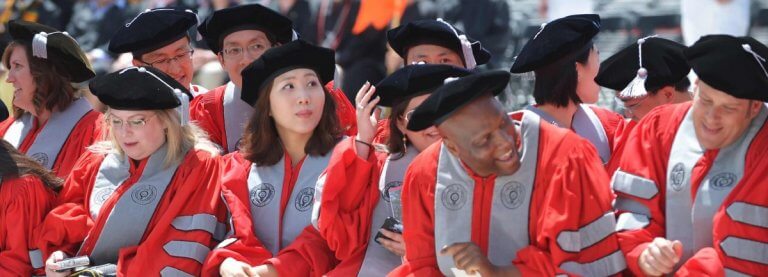
Approvals for international graduates from US colleges and universities to work in the US via the Optional Practical Training (OPT) quadrupled in size since 2008, a new Pew Research Centre analysis has found.
With 1.5 million international students allowed to stay and work in the US, the OPT is now larger than the controversial H-1B visa program which allows American employers to hire foreigners in specialty occupations, the Los Angeles Times reported.
The report’s author Neil Ruiz said: “We’ve seen this huge growth in foreign graduates staying under OPT, and most recently, it has surpassed the largest temporary-employment visa program, which is the H-1B.”
The U.S. government authorized 257,064 applications for its Optional Practical Training program in 2016, according to Pew Research Center. That is nearly double the number in 2014. https://t.co/bhL1yLQerA pic.twitter.com/BoTRuFZ4WV
— WSJ Politics (@WSJPolitics) May 11, 2018
In 2016, there were 257,604 OPT approvals, twice the figure in 2014 and more than three times of 2008.
International students on F-1 study visas are allowed to work during or after graduation in the US for 12 months under the OPT program. Those with STEM degrees from Student and Exchange Visitor Program (SEVP)-certified and accredited US colleges and universities are eligible for a further 24-month OPT extension.
Among private, not-for-profit schools, the University of Southern California has the most number of OPT participants, with 27,100 students from 2004 to 2016. These students come from all over the world, the report found, but Asians make up the majority – more than half (57 percent) of all OPT participants between 2004 and 2016 are from India, China and South Korea.
At the same time, more than half of OPT approvals were issued to STEM students, who are eligible for the 2-year extension.
Nearly three-quarters of the 1.5 million graduates (2004-2016) of the U.S. government's Optional Practical Training program (OPT) came from Asia https://t.co/D6nQllqJ7j pic.twitter.com/rbrbUlrkfI
— Pew Research Global (@pewglobal) May 10, 2018
A big difference between the H-1B visa program and the OPT program is the latter does not have a cap on how many approvals it can issue and no requirement for sponsorship by employers. The H-1B visa program, however, has an annual cap of 85,000 and employees must be sponsored by their American employers.
It’s “harder to get” the H-1B, Ruiz said. The OPT is seen as a way to “circumvent the H-1B quotes,” says John Miano a fellow at the Center of Immigration Studies.
The program started out giving work-experience opportunities to foreign students but since has been “transformed into a full-blown guestworker program whose stated purpose is to provide labour to American business,” Miano wrote in a September blog post for the center.
Liked this? Then you’ll love these…
US: New restrictions on F-1 students OPT extension
Top tips for F-1 students waiting for their H-1B application results







